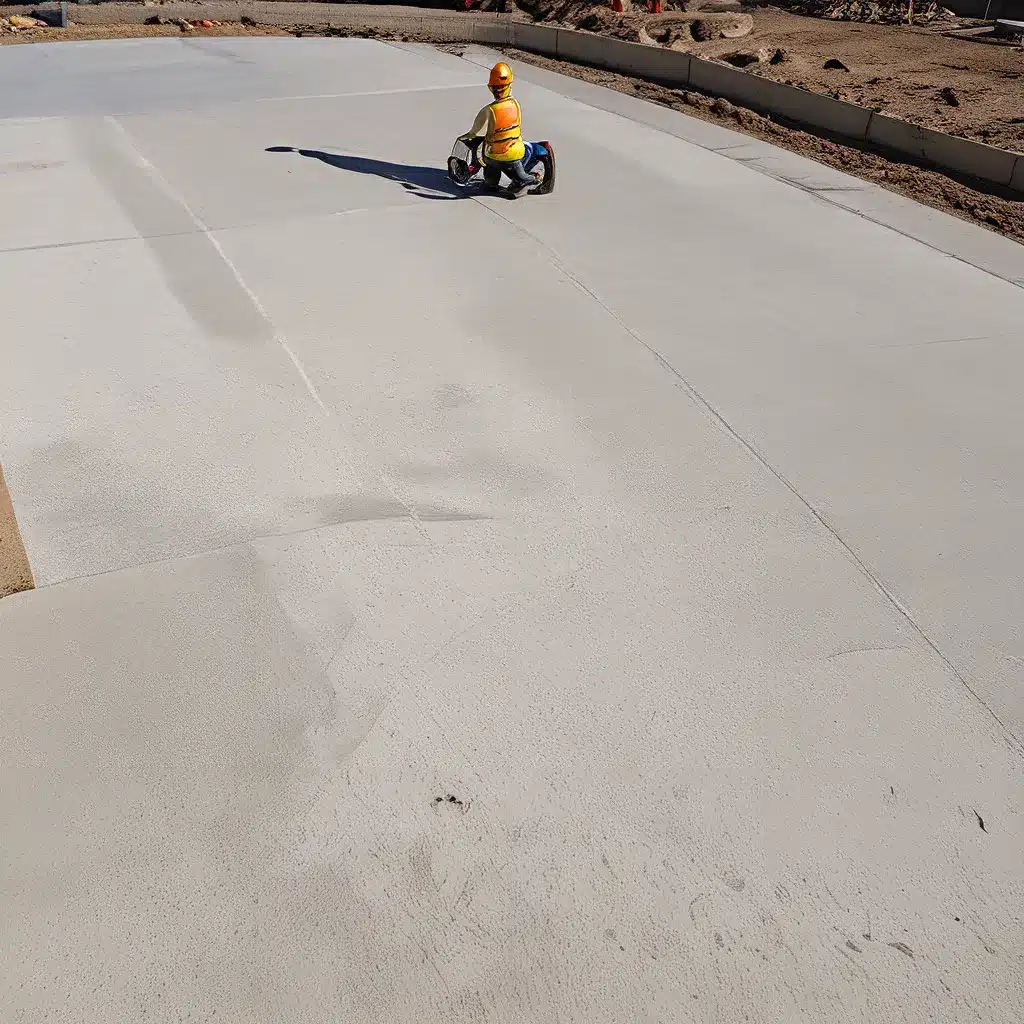
Just when you thought concrete couldn’t get any more exciting, the construction industry has proven us wrong. Gone are the days of dull, monotonous grey slabs. The future of concrete is nothing short of revolutionary, and I’m here to give you a front-row seat to the show.
Concrete’s Eco-Friendly Makeover
Let’s start with the elephant in the room – the environmental impact of traditional concrete production. I know, I know, it’s not the most glamorous topic, but bear with me. Traditionally, concrete has been a major contributor to carbon emissions, thanks to its high cement content. However, recent advancements have led to the emergence of some truly incredible green concrete innovations that are changing the game.
One standout example is geopolymer concrete, a product developed by ingenious researchers as an alternative to traditional cement-based concrete. Geopolymer concrete uses industrial by-products like fly ash and blast furnace slag instead of cement. This simple swap results in a 90% reduction in carbon emissions compared to conventional methods. And it doesn’t stop there – this environmentally friendly material also helps alleviate the burden on landfills by utilizing what would otherwise be waste products from industries.
But wait, there’s more! Imagine a concrete that can repair itself. That’s right, self-healing concrete is a remarkable breakthrough that’s turning the construction industry on its head. This concrete has the incredible ability to fill in cracks and prolong the lifespan of structures, saving time, money, and resources. It works by incorporating tiny capsules filled with healing agents within the concrete matrix. When cracks form, these capsules rupture, releasing the agents and initiating a chemical reaction that leads to the formation of new material – effectively sealing the damage.
And let’s not forget about the aesthetics! Concrete doesn’t have to be the boring, gray building block we’re all familiar with. Enter translucent concrete, a unique material that combines traditional concrete with optical fibers, allowing natural light to pass through while maintaining structural integrity. Imagine the possibilities – energy-efficient buildings that maximize daylighting, or perhaps a striking, modern art installation that blends seamlessly with its surroundings. The future of concrete is anything but dull.
Concrete Innovations for the 21st Century
But the innovation doesn’t stop there. Let’s talk about 3D-printed concrete, a technology that’s taking the construction industry by storm. Gone are the days of tedious, manual labor. With 3D printing, we can create structures quickly and in highly customized ways that traditional methods simply can’t achieve. Imagine a world where a house can be printed in just 24 hours, or where we can affordably and efficiently provide housing for those in need. It’s a game-changer, and it’s happening right now.
And what about concrete that’s 500 times harder to crack? That’s not science fiction, my friends. Researchers at the University of Michigan have developed a new concrete mix that incorporates silica sand, polyvinyl alcohol fibers, and chemical admixtures. This innovative blend results in a material that’s significantly more durable and lightweight, making it a game-changer for structures in high-seismic areas.
But wait, there’s more! Bendable concrete is another mind-bending innovation that’s changing the way we think about this age-old building material. By combining concrete with carbon fiber – known for its incredible strength-to-weight ratio – researchers have created a concrete that’s thinner, lighter, and stronger, all while resisting corrosion. Imagine the possibilities for energy-efficient construction, or even the creation of a Martian concrete that can withstand the harsh conditions of the Red Planet.
Concrete’s Porous Transformation
And let’s not forget about the permeability of concrete. Urban flooding has been a persistent problem, and traditional concrete and asphalt have been a major culprit. But fear not, the construction industry has a solution: pervious concrete. This porous material allows water to soak down to the ground, preventing floods and being more eco-friendly.
But the real showstopper, in my opinion, is self-consolidating concrete (SCC). This innovative material, also known as self-healing concrete, flows under its own weight, eliminating the need for mechanical vibration. The secret lies in its balanced mix design, which includes a lower water-to-cement ratio, higher fine aggregates, and the use of super-plasticizers and viscosity-modifying agents. The result? A concrete that’s easier to place, more structurally sound, and even more aesthetically pleasing with its smooth surface finish.
The Future is Concrete
As you can see, the world of concrete is anything but boring. The innovations we’re seeing today are truly mind-blowing, revolutionizing the construction industry and paving the way for a more sustainable, efficient, and beautiful future.
If you’re ready to explore the cutting edge of concrete technology, look no further than Concrete RTownsville. Our team of experts is at the forefront of these incredible advancements, ready to help you bring your construction dreams to life. So, what are you waiting for? Let’s dive into the future of concrete together!

